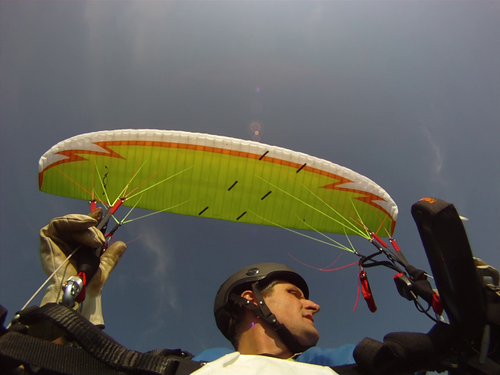Mentor 2 M |
|||||||||||||||||||||||||||||||||||||||||||||||||||||||||||||||||||||||||||||||||||||||||||||||||||||||||||||||||||||||||||||||||||||||||||||||||


|
|||||||||||||||||||||||||||||||||||||||||||||||||||||||||||||||||||||||||||||||||||||||||||||||||||||||||||||||||||||||||||||||||||||||||||||||||
Instability rating |
|||||||||||||||||||||||||||||||||||||||||||||||||||||||||||||||||||||||||||||||||||||||||||||||||||||||||||||||||||||||||||||||||||||||||||||||||
|
|||||||||||||||||||||||||||||||||||||||||||||||||||||||||||||||||||||||||||||||||||||||||||||||||||||||||||||||||||||||||||||||||||||||||||||||||
Glider characteristics |
|||||||||||||||||||||||||||||||||||||||||||||||||||||||||||||||||||||||||||||||||||||||||||||||||||||||||||||||||||||||||||||||||||||||||||||||||
|
Launch preparations: difficult
launch characteristics: dynamic, climbs constantly, no guidance necessary, good feedback during inflation, overshoots, pronounced braking required, accelerates before zenith, control check simple, low takeoff speed
asymmetric collapse: canopy colllapses at high angle to leading edge, high dynamics, total course change 270-360°, (4), fast course change rate, marked forward pitching 60-75°, (4), high height loss 40-49 m, (3), high sink velocity 20-24 m/s, (3), collapse on opposite wingtip with course change <90°, (4), with cravat, (5), G-Force 2,5- 2,9 G, (2)
Frontal collapse: canopy collapses with high total collapse aera, marked pitch backwards 45-60°, moderate pitch forwards 30-45°, moderate dynamics, course change <90°, (2), variable recovery behaviour, at times with stable closed frontal collapse, at times with automatic recovery, (4), usually symmetric recovery, simple pilot action required, (4), horseshoe, wingtips at front, delayed return to normal airspeed, short deep stall phase, with tendency to cravat, (4), high height loss 40-49 m, (3), moderate sink velocity 15-19 m/s, (2)
Spiral dives: rapid sink velocity increase, High G-Force 4,0-4,5 G, (3), Sink velocity after 720° < 22 m/s, (4), Very high maximum sink velocity <25 m/s, (4), sink velocity increase < 3 m/s on brake release, (1), Course change 90-180° after spiral exit, (1), low height loss during recovery < 30 m, (1)
B-Stall: normal force required, moderate pitch backwards 15-30°, moderate pitch forwards 15-30°, unstable sink phase, high deformation tendency, immediate return to normal airspeed, 8-10 m/s, height loss on recovery 20-40 m
big ears: simple initiation, stable flight phase, immediate automatic recovery, Vsink unaccelerated 2,5-3 m/s, Vsink accelerated > 5 m/s, Vunaccelerated 5-8 km/h less than trimspeed, Vaccelerated >8 km/h faster than trimspeed
Steering behaviour: agile |
|||||||||||||||||||||||||||||||||||||||||||||||||||||||||||||||||||||||||||||||||||||||||||||||||||||||||||||||||||||||||||||||||||||||||||||||||
Notes |
|||||||||||||||||||||||||||||||||||||||||||||||||||||||||||||||||||||||||||||||||||||||||||||||||||||||||||||||||||||||||||||||||||||||||||||||||
|
Launch preparations: We began our test series where all flights begin, with launch preparations. Ergonomic considerations where the machine (paraglider) should fit perfectly to the user (pilot) for a particular use (launching) quickly revealed large differences between the different models. Life can be simple, very simple, as revealed by the Skywalk Mescal3, Nova Prion and Paratech P12. These gliders have just a few solid lines organized in an easily understandable scheme together with soft upper gallery lines which don't tend to tangle with each other and clearly coloured and separated risers. Line checks are quickly made with a few gentle pulls and glances. On gliders where thin, unsheathed gallery lines are present (Nova Mentor 2, Swing Mistral 6, Ozone Rush 3, Gradient Golden 3, Skywalk Chili 2, Nova Ion Light) line checks become increasingly demanding. “Dental floss” lines not only require more optical attention, but also tend to tangle or get caught up in small obstacles more readily. Most demanding in this respect was the Ozone Rush 3, here unsheathed lines are present in the upper and middle galleries. Several unsheathed lines are also attached to the stabiliser and require careful checking for tangling before launching. In addition, the aramid lines used are relatively stiff and have a tendency to form loops and tangle with each other. Launch characteristics: Gliders which climb rapidly and need a good block on the brakes to prevent them from overshooting require mode advanced coordinative skills to launch safely. This was the case with Ozone's Rush 3; particularly at steep launch sites, good reactions are required to keep the canopy under control at all times. The Nova Mentor 2, Skywalk Chili 2 and Golden 3 from Gradient were all somewhat tamer, but giving these gliders too much of an impulse or leaving your hands on the A-risers for a little too long would make them all clearly overshoot. Asymmetric Collapses: The Nova Mentor generally reacts very well to collapses of all sizes, but again can react particularly dynamically on occasion. Large collapses, on the outer limit of the norm measurement field can lead to cravats, and require active recovery from the pilot to prevent entering a spiral dive. Cravats, generally the “worst case scenario” for hobby pilots. |
|||||||||||||||||||||||||||||||||||||||||||||||||||||||||||||||||||||||||||||||||||||||||||||||||||||||||||||||||||||||||||||||||||||||||||||||||
Rating |
|||||||||||||||||||||||||||||||||||||||||||||||||||||||||||||||||||||||||||||||||||||||||||||||||||||||||||||||||||||||||||||||||||||||||||||||||
|
Safety class 5 This class of paraglider reacts very demandingly to one or more of the following manoeuvres: frontal collapse, asymmetric collapse or spiral dive and may present pilots with a particular challenge.Very demandingly means that the above manoeuvres result in highly dynamic reactions from the glider, and/or large height losses. Critical subsequent glider reactions are also to be expected. Expert piloting skills achieved through constant practice, fast personal reaction times and precise pilot inputs are required to be able to immediately react to the above manoeuvres to maintain flight control and prevent large height loss or subsequent critical glider reactions. In particular, pilots should be able to recognise the onset of the above manoeuvres and be able to prevent or minimise their effects through immediate and precise pilot inputs. |
|||||||||||||||||||||||||||||||||||||||||||||||||||||||||||||||||||||||||||||||||||||||||||||||||||||||||||||||||||||||||||||||||||||||||||||||||

